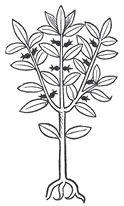My Medieval Herb Garden
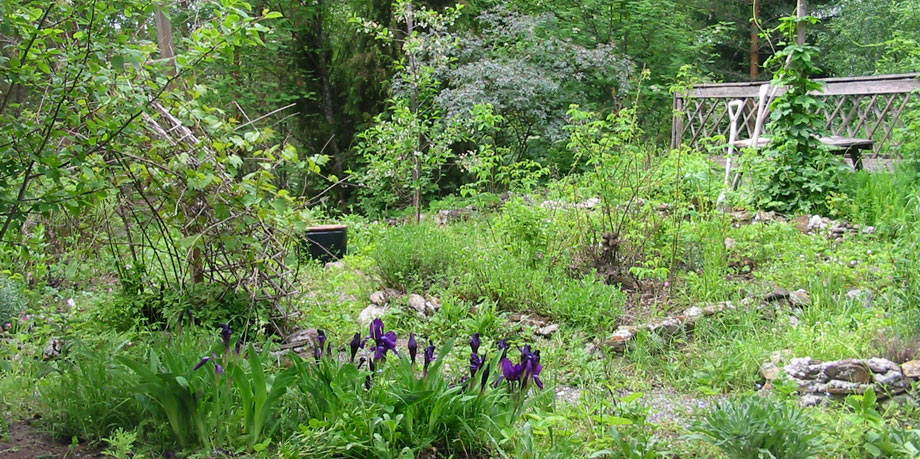
I have a medieval Herb Garden. Its model comes from early Middle Ages; in the center there is a small round flower patch and around it are both square and triangle - shaped patches. I have found a garden like this from Albertus Magnus's writings from 10th century. In the picture there is plum tree and irises in the front.
In the center of every patch there is a rose. Patches are lined with small herbs. Between roses and small herbs taller herbs are grown. Here are hyssop (hyssopus officinalis) and rosa gallica - species. This kind of form was used in the herb garden which was located in front of the Medieval Museum of Stockholm in 20th century. There is a park now.
Old garden rose (rosa gallica versicolor, in this picture) and apothecary's rose (rosa gallica officinalis) were the oldest roses in medieval gardens. Mine stay well over winter and spread eagerly around, but are less than one meter high. Apothecary's rose was used in food, cosmetics and medicine in the Middle Ages.
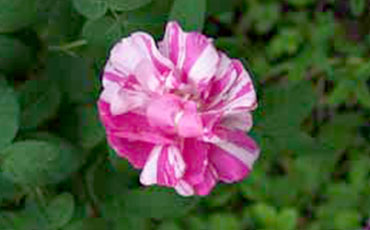
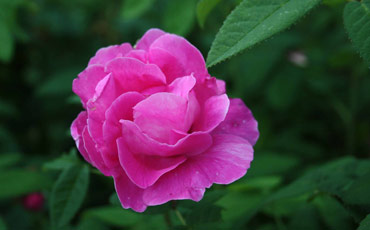
I have lined the patches with small walls made of natural stones: the ground around my garden is stony, so it was sensible to use them somewhere. An example of stone wall linings in a garden patch is from excavations of medieval town of Oslo. Here grows a young Great or Common Mullein (Verbascum thapsus).

My garden is lined with a fence made from sterns of young birches and rowans. Law books from the Middle Ages (for example king Christopher, king of Sweden in the 15th century, made one) mention that a person was not allowed to steal or take twigs from someone's garden. A garden was specified at those times to be an area surrounded by a fence. Fences in medieval Europe were often made of nut or willow, but I had an oversupply of young birches. Reconstructed medieval gardens often have different kinds of grill fences; so I made one, too.
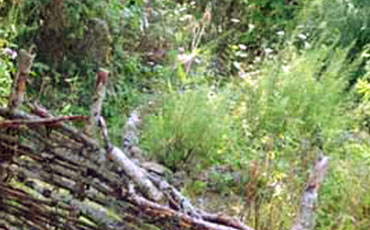
An example of this can be found in Sylvia Landberg's book Medieval Gardens. Grill fences were used by less wealthy people, especially when they wanted to prevent domesticated animals eating their vegetables and medicine plants. The book shows an example of a fence made of boards, that I used as an example when buiding this one.
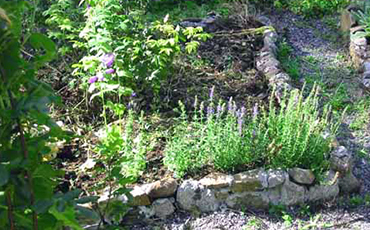
When I built my garden I mainly studied John Harvey and especially his wonderful book Medieaval Gardens (London, 1981). I think that it is the best possible book for a modern medieval gardener. His other books are also very useful.
There are plenty of period books from Europe, too. If you use them, you have to remember, though, that between medieval and modern language there is a long journey of time, and many translations or changes might have happened. Here in the picture is myrtle (myrtus communis, more likely wild myrtle Myrica gale). Who knows if even the name of the plants remain the same...
